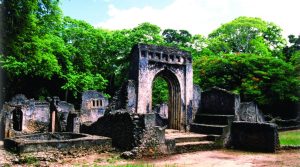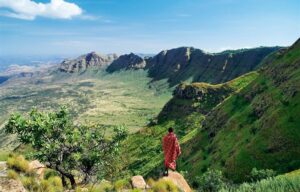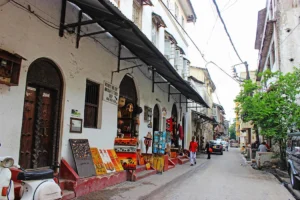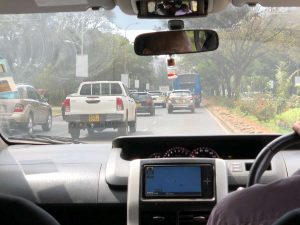A Complete Guide To Kenya’s 8 UNESCO World Heritage Sites
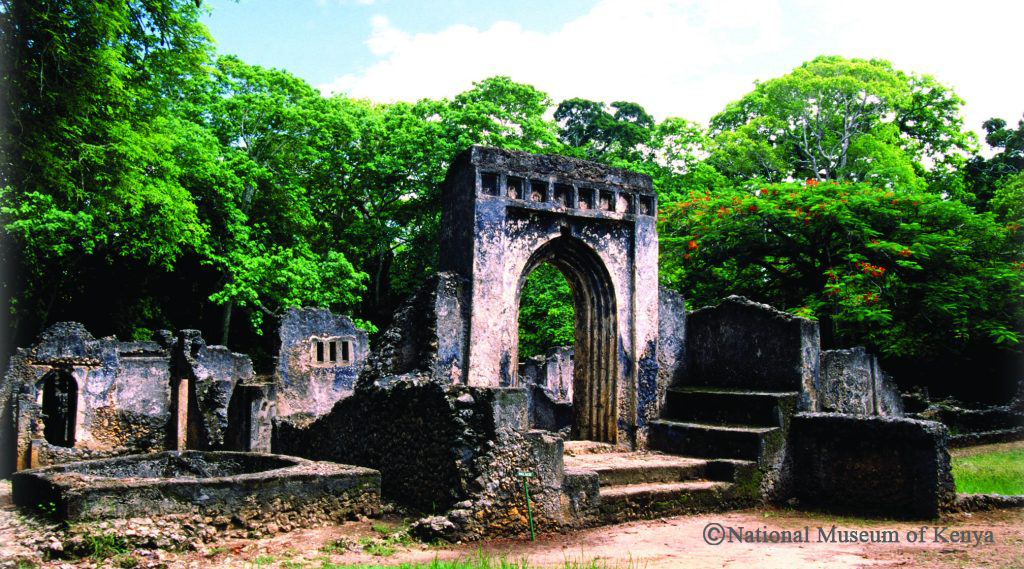
Kenya stands as one of Africa’s most culturally and naturally diverse nations, a fact beautifully reflected in its impressive collection of UNESCO World Heritage Sites. With Gedi’s inclusion in 2024, Kenya now boasts eight UNESCO World Heritage Sites, each representing outstanding universal value to humanity. These remarkable destinations showcase everything from ancient Swahili architecture to pristine ecosystems that have shaped human understanding of our planet’s history.
1. Mount Kenya National Park (Natural Site – 1997)
Mount Kenya, Africa’s second-highest peak at 5,199 meters, represents one of the continent’s most spectacular mountain ecosystems. This ancient extinct volcano, formed over 3 million years ago, creates a unique high-altitude environment that supports extraordinary biodiversity.
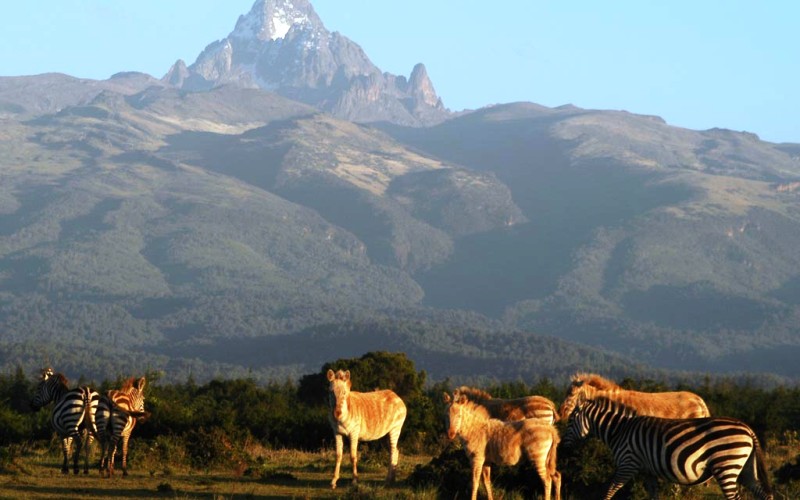
What Makes It Special:
- Rugged glacier-clad peaks and diverse ecological zones
- Home to unique alpine flora including giant groundsels and lobelias
- Critical water catchment area for millions of Kenyans
- Sacred site for the Kikuyu people, known as Kirinyaga (Mountain of Brightness)
Best Time to Visit: January-February and July-October for clearer weather and better climbing conditions.
Key Activities: Mountain climbing, wildlife viewing, forest walks, and cultural experiences with local communities.
2. Lake Turkana National Parks (Natural Site – 1997)
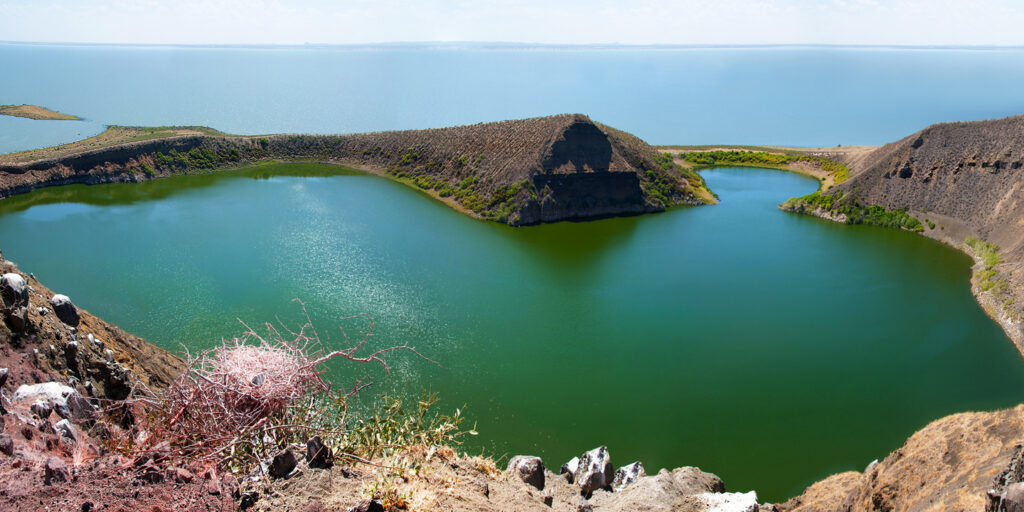
The Lake Turkana National Parks comprise of three wildlife parks serve as a stopover for migrant waterfowl and are major breeding grounds for the Nile crocodile, hippopotamus, and a variety of venomous snakes. This remote northern Kenya site encompasses three parks: Sibiloi National Park, Central Island National Park, and South Island National Park.
Archaeological Significance: The Koobi Fora deposits, rich in mammalian, molluscan and other fossil remains, have contributed more to the understanding of paleo-environments than any other site on the continent.
Current Status: The site was inscribed on the World Heritage List in Danger in 2018 due to concerns about changes affecting the hydrology of the Lake Turkana Basin, notably the disruptive effect of Ethiopia’s Gibe III dam.
What to Expect:
- World’s largest permanent desert lake
- Important fossil sites revealing human evolutionary history
- Unique desert and semi-desert ecosystems
- Traditional cultures of the Turkana, El Molo, and other pastoralist communities
3. Lamu Old Town (Cultural Site – 2001)
Lamu Old Town represents the oldest Swahili settlement in East Africa, perfectly preserving centuries of maritime trading culture. This car-free island town maintains its authentic character through traditional dhow sailing, donkey transport, and Swahili architecture.
Cultural Heritage: Lamu boasts several historic sites, including the German Post Office, the Lamu Museum, and the Lamu Fort.
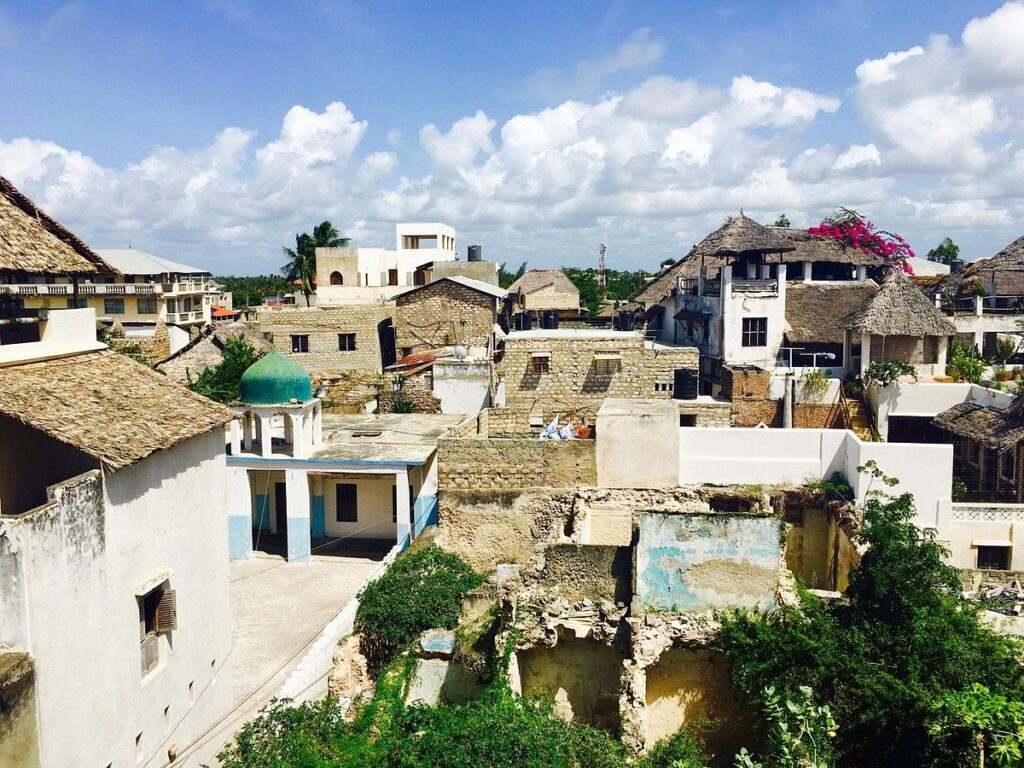
Unique Features:
- Finest example of Swahili settlement in East Africa
- Traditional coral stone and mangrove timber architecture
- Living cultural landscape where ancient traditions persist
- Annual Lamu Cultural Festival celebrating Swahili heritage
Best Experiences: Dhow sailing, exploring narrow streets and traditional markets, visiting historic mosques, and experiencing authentic Swahili culture.
4. Fort Jesus, Mombasa (Cultural Site – 2011)
Built by the Portuguese in 1593, Fort Jesus represents one of the finest examples of 16th-century Portuguese military fortification. This star-shaped fort controlled the entrance to Mombasa’s Old Harbour for over four centuries.
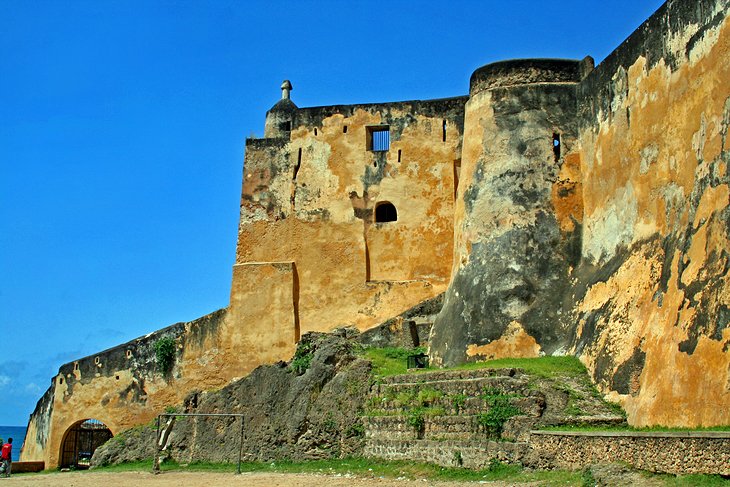
Historical Importance:
- Witness to the struggle for control of the Indian Ocean trade
- Changed hands nine times between Portuguese, Omani Arabs, and British
- Outstanding example of Renaissance military architecture adapted to local conditions
- Museum housing artifacts spanning 600 years of Kenyan coastal history
Architecture: The fort’s design reflects Italian Renaissance military engineering principles, with angular bastions and intricate defensive systems.
5. Kenya Lake System in the Great Rift Valley (Natural Site – 2011)
This site encompasses three interconnected shallow lakes: Lake Nakuru, Lake Elementaita, and Lake Bogoria. Together, they create one of the world’s most important bird sanctuaries and a critical breeding ground for lesser flamingos.
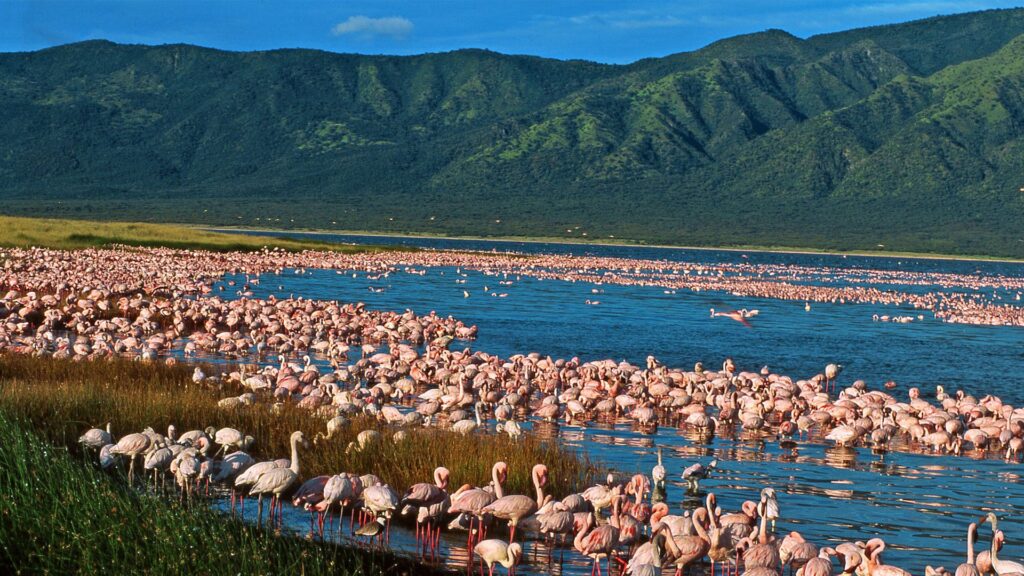
Ecological Significance:
- Supports over 4 million lesser flamingos (75% of global population)
- Critical feeding and breeding ground for great flamingos and other water birds
- Home to endangered black rhinos and Rothschild’s giraffes
- Unique alkaline lake ecosystem
Wildlife Highlights:
- Seasonal spectacle of millions of flamingos
- Over 450 bird species recorded
- Rare mammals including leopards, lions, and endangered species
- Hot springs and geysers in Lake Bogoria
6. Mijikenda Kaya Forests (Cultural Site – 2008)
The Mijikenda Kaya Forests consist of 11 separate forest sites, spread over some 200 km along the coast. They contain the remains of numerous fortified villages, known as kayas.
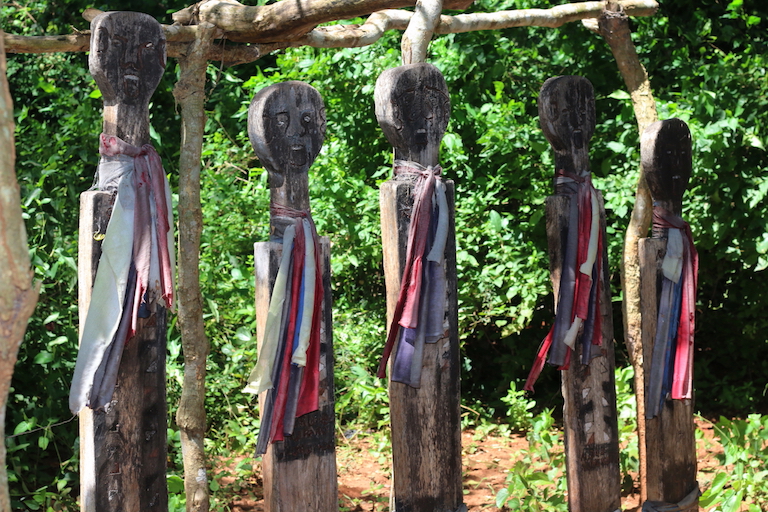
Cultural Significance:
- Sacred forests of the nine Mijikenda ethnic groups
- Traditional governance and spiritual practices maintained for centuries
- Important biodiversity conservation through traditional management
- Living cultural landscape demonstrating sustainable forest management
Sacred Elements:
- Traditional shrines and ritual sites
- Medicinal plants used in traditional healing
- Ancestral burial grounds
- Council meeting places (parliament trees)
7. Thimlich Ohinga Archaeological Site (Cultural Site – 2018)
Located in western Kenya near Lake Victoria, this dry-stone walled settlement represents the largest and best-preserved example of its kind in East Africa. Dating from the 16th century, it showcases sophisticated indigenous architecture and settlement patterns.
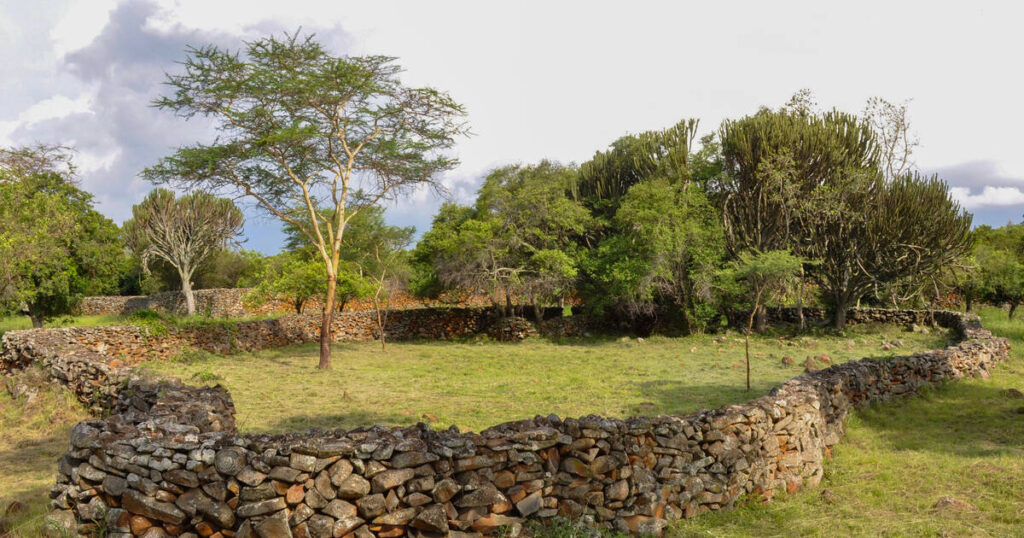
Archaeological Importance:
- Finest example of traditional stone enclosures in eastern Africa
- Evidence of complex social organization and trade networks
- Traditional Luo settlement patterns and architecture
- Connection to iron-working communities around Lake Victoria
Features:
- Massive dry-stone walls reaching up to 4.2 meters high
- Complex system of enclosures for different social functions
- Evidence of livestock keeping, iron smelting, and trade
- Traditional building techniques still used in the region
8. The Historic Town and Archaeological Site of Gedi (Cultural Site – 2024)
Kenya’s newest World Heritage Site, officially inscribed on July 27, 2024, Gedi represents one of East Africa’s most important archaeological sites. The site serves as a testament to Swahili architectural and cultural heritage.

Historical Significance:
- 13th-15th century Swahili town demonstrating sophisticated urban planning
- Evidence of international trade connections with Asia, Arabia, and Europe
- Remarkable preservation of coral stone buildings and Islamic architecture
- Mysterious abandonment in the 17th century adds to its intrigue
Archaeological Features:
- Palace complex with elaborate architectural details
- Great Mosque with intricate geometric decorations
- Residential areas showing social stratification
- Sophisticated water management systems
Planning Your UNESCO Heritage Journey
Best Time to Visit: Kenya’s dry seasons (December-March and July-October) offer optimal conditions for most sites, though specific locations may have different ideal periods.
Getting There: Most sites are accessible from Nairobi or Mombasa, though Lake Turkana requires more extensive planning due to its remote location.
Cultural Sensitivity: Many sites hold deep spiritual significance for local communities. Visitors should respect local customs, dress codes, and photography restrictions.
Conservation Support: These sites are under the joint management of Kenya Wildlife Services (KWS) and National Museums of Kenya (NMK), with entrance fees contributing directly to conservation efforts.
The Broader Impact
Kenya’s UNESCO World Heritage Sites represent more than tourist destinations; they’re guardians of irreplaceable cultural and natural heritage. From the evolutionary insights of Lake Turkana to the living traditions of the Mijikenda forests, these sites connect us to humanity’s shared story while highlighting the urgent need for conservation in our rapidly changing world.
Whether you’re drawn to ancient Swahili architecture, spectacular wildlife congregations, or archaeological mysteries, Kenya’s World Heritage Sites offer profound experiences that enrich understanding of both our past and our responsibility to future generations. Each site stands as a testament to the remarkable diversity of human culture and natural evolution that makes Kenya truly extraordinary.
Would you love to visit one, more or all of these popular Kenya heritage sites- simply contact us today by sending an email to info@rentadriverkenya.com or call +256-700135510 to speak with the reservations team.
